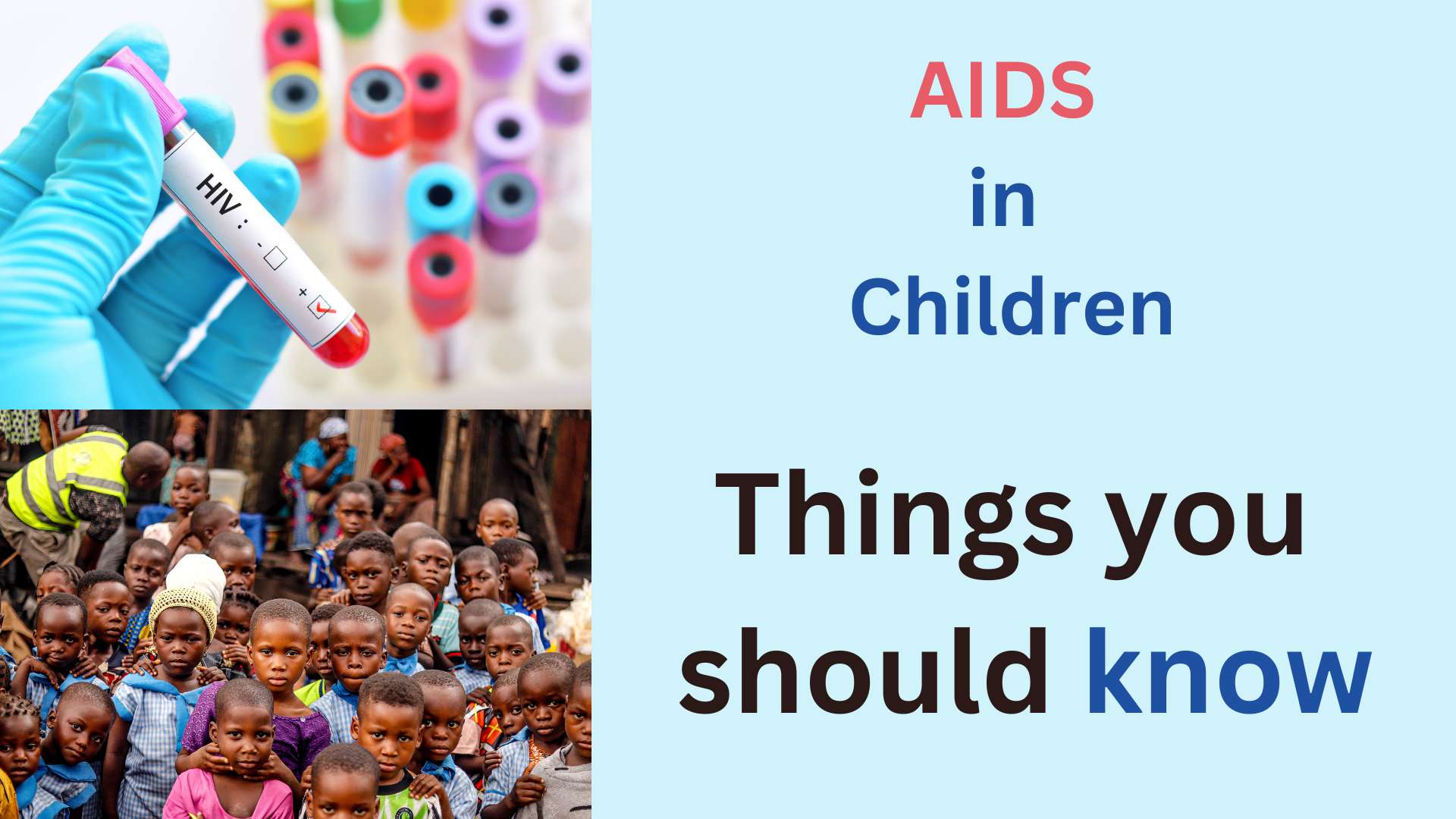28/11/2022 / Health and Fitness
AIDS in Children
AIDS in children is not getting the limelight it deserves but here we are to break the silence and voice of millions of HIV-infected children!

Table of Content
Introduction
We all know about AIDS but we don’t have enough knowledge about AIDS in children. Given that AIDS is already a stigmatised illness, proper care for HIV-infected children is often neglected. Here we are discussing the care and proper management of children affected by AIDS.
Causes of AIDS in Children

A child can be HIV infected at birth or can catch it later. Here are some of the common causes of AIDS in children,
During gestation
During delivery
While breastfeeding
Semen, vaginal fluid, or blood containing HIV.
Having vaginal, oral, or anal sex
Sharing needles, syringes, and similar items.
Contact with blood containing HIV.
HIV Symptoms in Children

Before going ahead, let us know the HIV symptoms in children which would help you in preparing for early diagnosis and treatment,
Lethargy
Decreased growth and development
Recurrent fever
Unexplained weight loss
Enlarged lymph nodes
Frequent gastric infections and diarrhoea
Delayed onset of AIDS in children and teens can cause other symptoms like,
Kidney issues
Lung infections
Tumours
Skin rashes
Vaginal infections
Problems in learning and memory
Complications of AIDS
AIDS is always infamous for secondary infections - so complications normally would arise. Some of them are,
Meningitis
Hepatitis
Pneumonia
Herpes
Shingles
Chickenpox
Children Vulnerable to HIV
Many children are today vulnerable to HIV due to the rise in,
Orphaned and displaced children due to wars or disasters.
Divorced parents who leave their children unattended and neglected, increasing their susceptibility to sexual exploitation.
The stigmatisation of HIV in children which keeps many children untreated.
Criminal cases of abduction and forced sex work.
Diagnosis of HIV-infected child
As for other HIV infections, the diagnosis is done through blood tests. The blood is tested for the presence of HIV antibodies but if the virus has not multiplied enough, the blood usually shows a false negative. This period of testing false negatives is called the window period. If the result of the test is doubted, the HIV infection has to be repeated after 3 or 6 months again.
Effects of HIV on child development
Children with HIV may be difficult to identify since non-HIV children also fall sick. But the HIV-infected children become sick more often and more severely. Some of the effects of HIV on children include
Ailing from diarrhoea, respiratory infections and malnutrition with increased frequency and severity.
Having stunted growth and being underweight.
Developing mental illnesses like depression, anxiety or schizophrenia.
Treatment of AIDS in Children

Though HIV infection doesn't have standard vaccines, many HIV-infected children are now living healthy, happy and fulfilling lives.
Antiretroviral drugs can be used to treat HIV in children which helps them better manage and control HIV infection.
The doses of the drugs depend upon the severity of the HIV infection, the risk of progression, previous and current HIV-related illnesses, toxicities, side effects, drug interactions, age, weight, and stage of development.
Management of AIDS in Children
Children suffering from HIV infection need more careful management and support in their fight against the disease. Some management methods in children include,
There are no prescribed vaccines against HIV but HIV-infected children are more susceptible to other diseases, we need to administrate other vaccines such as,
Varicella (chickenpox, shingles)
Hepatitis B
Human papillomavirus (HPV)
Influenza
Measles, mumps, and rubella (MMR)
Neningococcal meningitis
Pneumonia
Polio
Tetanus, diphtheria, and pertussis (Tdap)
Hepatitis A
Supportive care includes mental health counselling and sexual health counselling.
Making them feel loved and cared for so that they don't take any self-destructive path like substance abuse or sex work.
Take-Home Points
AIDS in children can happen during childbirth or during the later stages of life.
Children with HIV infection need good treatment and a strong support system to lead healthy, happy and fulfilling lives.
Children shouldn't be neglected in the HIV treatment spectrum as they require high-level care and support.
References
FAQ on AIDS in Children
AIDS in children is due to the HIV-infected mothers who spread the virus to the children through the umbilical cord or when they breastfeed them.
Weight loss, tumours, problems related to memory, enlarged lymph nodes, fever and diarrhoea.
The average life expectancy of an HIV-infected child from the day of diagnosis is 10 years but the treatments are improving to increase the quality and longevity of life.
HIV-treated children are mostly treated with antiretroviral drugs.
Nothing can support a child more than loving words and hugs. Just remember to not segregate them with your prejudices. Support and cherish them by treating them as normal children.
Comments ( 0 )
No Comments
Leave a Comment
Health & Wellness Tips
Subscribe to our blog